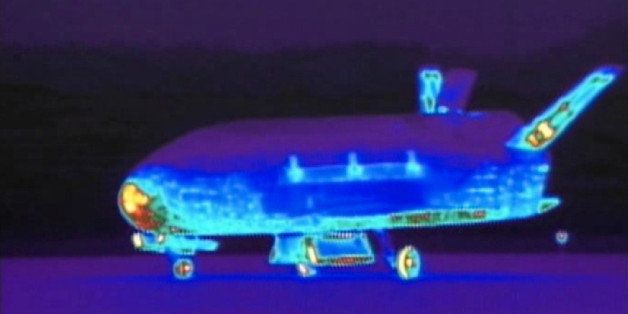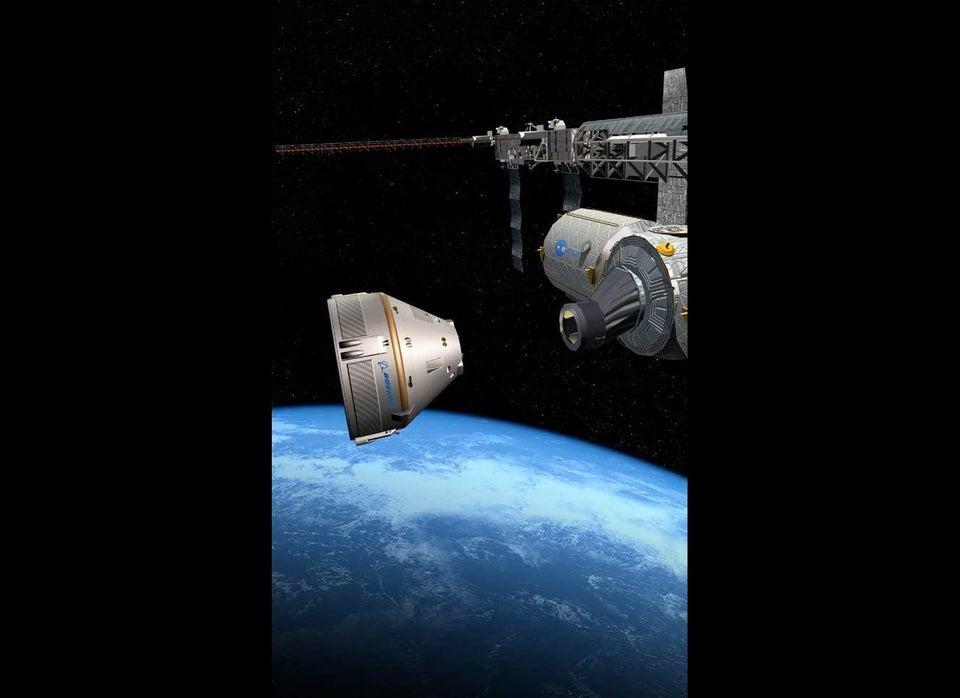LOS ANGELES (Reuters) - The U.S. military landed its X-37B robotic space plane at Vandenberg Air Force Base in central California on Friday, ending a classified 22-month mission that marked the third in Earth orbit for the experimental program, the Air Force said.
The X-37B, a 29-foot-long (9-meter) winged craft that resembles a miniature NASA space shuttle, touched down at 9:24 a.m. local time at the coastal air base and launch facility near Lompoc, California, 160 miles (258 km) northwest of Los Angeles.
Also known as the Orbital Test Vehicle, the X-37B was carried into orbit for its latest mission aboard an unmanned Atlas 5 rocket from Cape Canaveral Air Force Station in Florida on Dec. 11, 2012.
The spacecraft conducted unspecified experiments for 674 days while in orbit, marking the lengthiest mission to date for the secretive program, which is managed by the Air Force Rapid Capabilities Office, the Air Force said.
The space plane first flew in April 2010 and returned after eight months. A second vehicle blasted off in March 2011 and stayed in orbit for 15 months. Those first two missions also ended at Vandenberg.
The Air Force says the orbiters, built by Boeing, "perform risk reduction, experimentation and concept-of-operations development for reusable space vehicle technologies," although details of the missions are secret.
Total program costs and budget line are likewise classified.
Last week, the Air Force and NASA finalized a lease agreement to relocate the space plane program from California to Florida’s Kennedy Space Center, where the runway once used for shuttle landings may be used for future X-37B touchdowns.
The Secure World Foundation, a nonprofit group promoting the peaceful exploration of space, says secrecy surrounding the orbital activities and payloads of the X-37B are almost certainly due to the presence of national intelligence-related hardware being tested or evaluated.
"The landing of OTV-3 marks a hallmark event for the program," an unnamed program manager said in a statement released by the Air Force's 30th Space Wing at Vandenberg.
The Air Force is preparing to launch the fourth X-37B mission from Cape Canaveral in 2015.
(Additional reporting by Irene Klotz in Cape Canaveral, Florida; Editing by Doina Chiacu and Will Dunham)
Support HuffPost
Our 2024 Coverage Needs You
Your Loyalty Means The World To Us
At HuffPost, we believe that everyone needs high-quality journalism, but we understand that not everyone can afford to pay for expensive news subscriptions. That is why we are committed to providing deeply reported, carefully fact-checked news that is freely accessible to everyone.
Whether you come to HuffPost for updates on the 2024 presidential race, hard-hitting investigations into critical issues facing our country today, or trending stories that make you laugh, we appreciate you. The truth is, news costs money to produce, and we are proud that we have never put our stories behind an expensive paywall.
Would you join us to help keep our stories free for all? Your contribution of as little as $2 will go a long way.
Can't afford to donate? Support HuffPost by creating a free account and log in while you read.
As Americans head to the polls in 2024, the very future of our country is at stake. At HuffPost, we believe that a free press is critical to creating well-informed voters. That's why our journalism is free for everyone, even though other newsrooms retreat behind expensive paywalls.
Our journalists will continue to cover the twists and turns during this historic presidential election. With your help, we'll bring you hard-hitting investigations, well-researched analysis and timely takes you can't find elsewhere. Reporting in this current political climate is a responsibility we do not take lightly, and we thank you for your support.
Contribute as little as $2 to keep our news free for all.
Can't afford to donate? Support HuffPost by creating a free account and log in while you read.
Dear HuffPost Reader
Thank you for your past contribution to HuffPost. We are sincerely grateful for readers like you who help us ensure that we can keep our journalism free for everyone.
The stakes are high this year, and our 2024 coverage could use continued support. Would you consider becoming a regular HuffPost contributor?
Dear HuffPost Reader
Thank you for your past contribution to HuffPost. We are sincerely grateful for readers like you who help us ensure that we can keep our journalism free for everyone.
The stakes are high this year, and our 2024 coverage could use continued support. If circumstances have changed since you last contributed, we hope you’ll consider contributing to HuffPost once more.
Already contributed? Log in to hide these messages.


